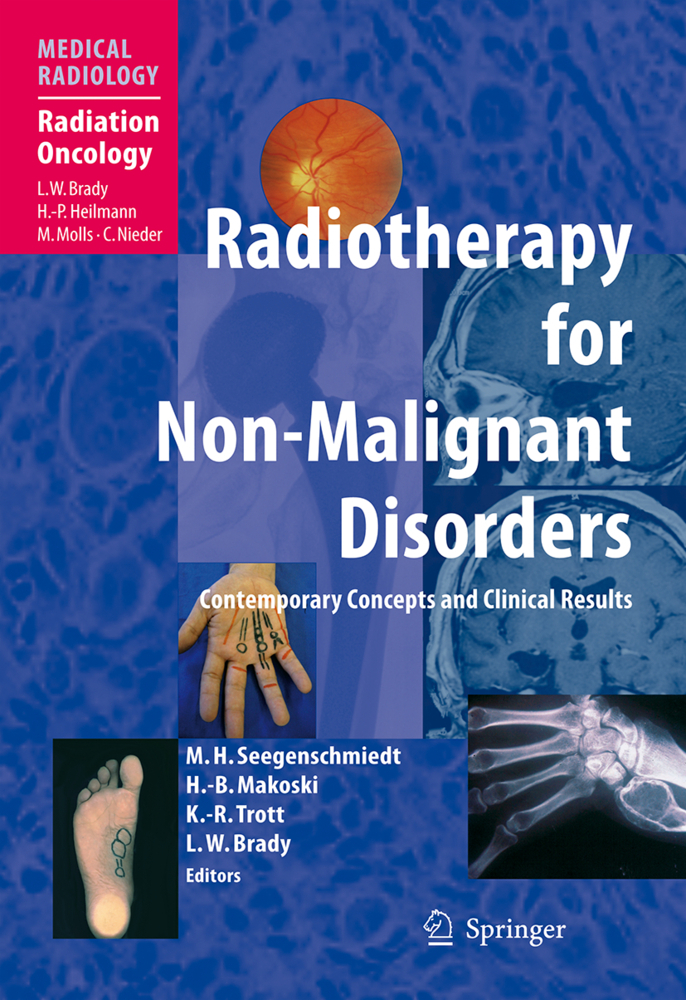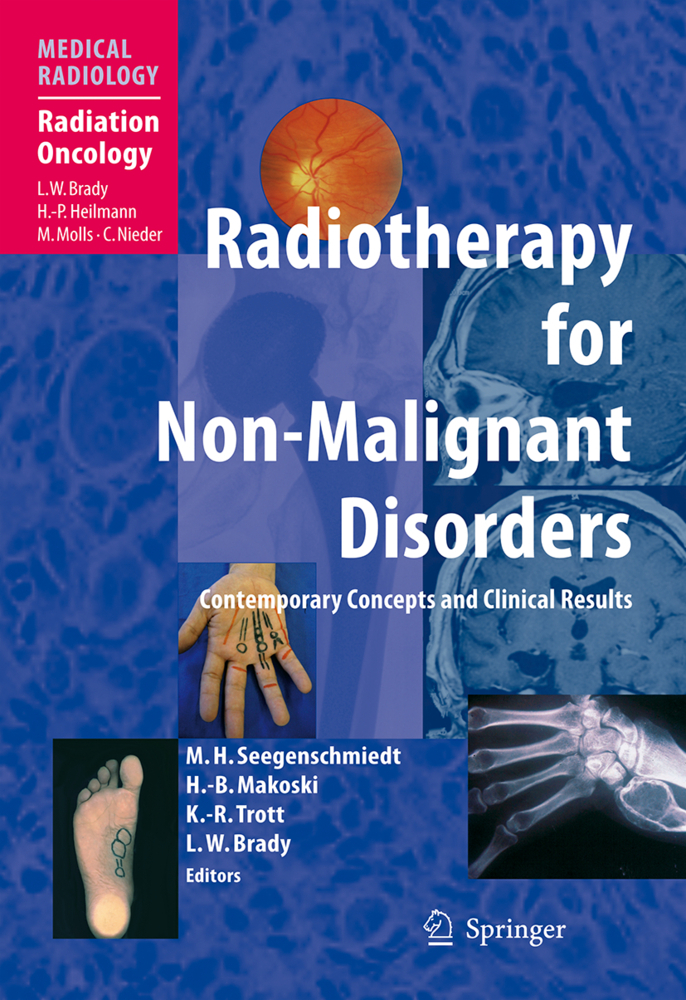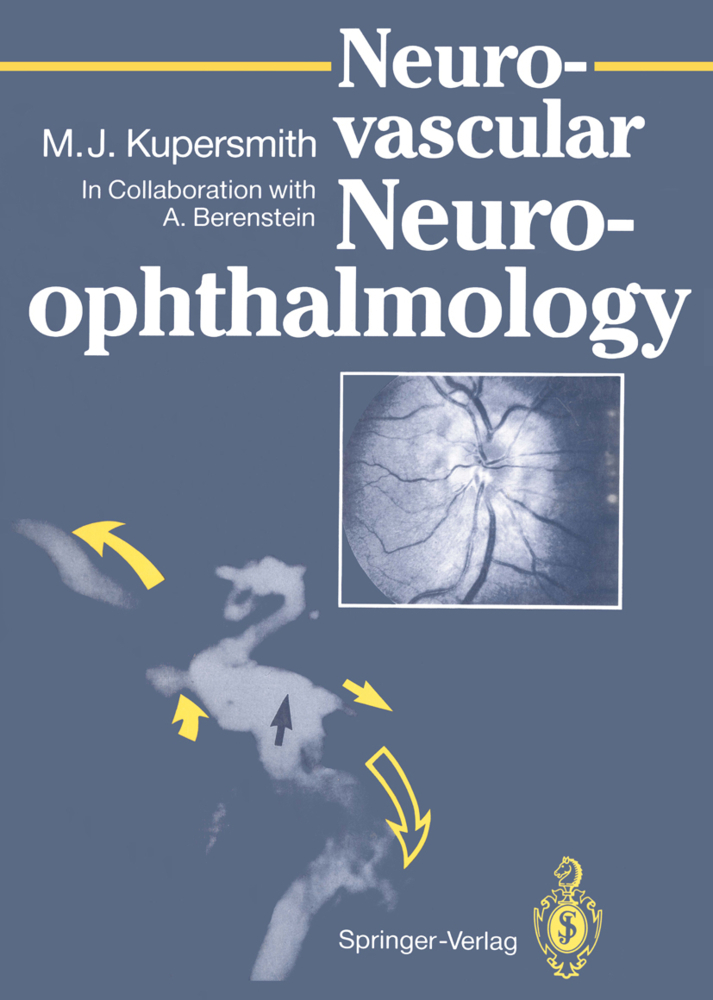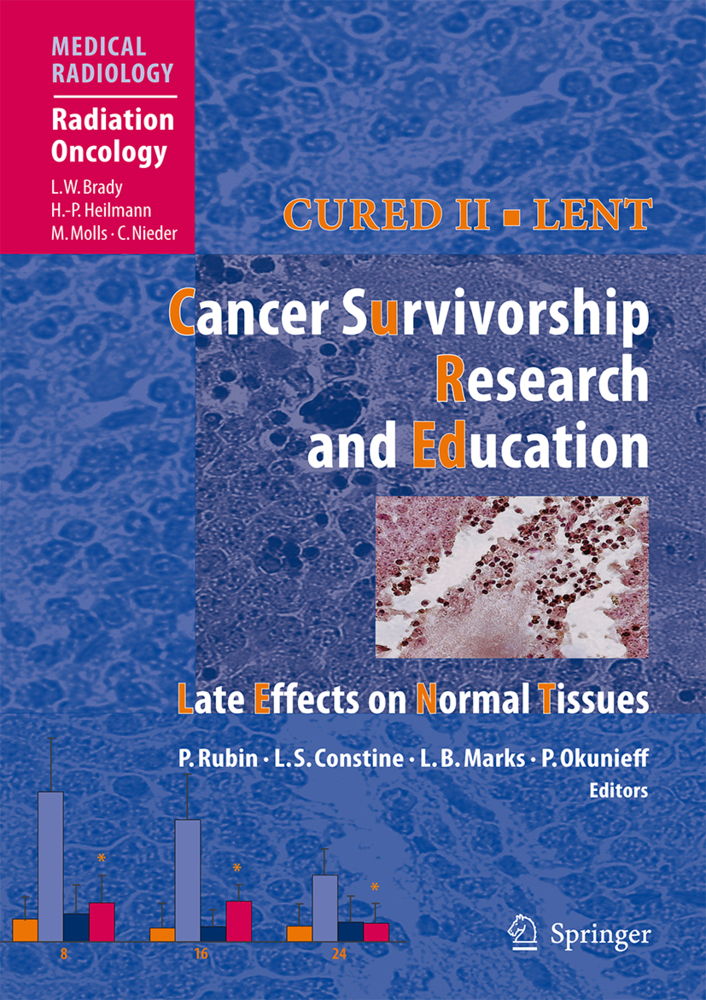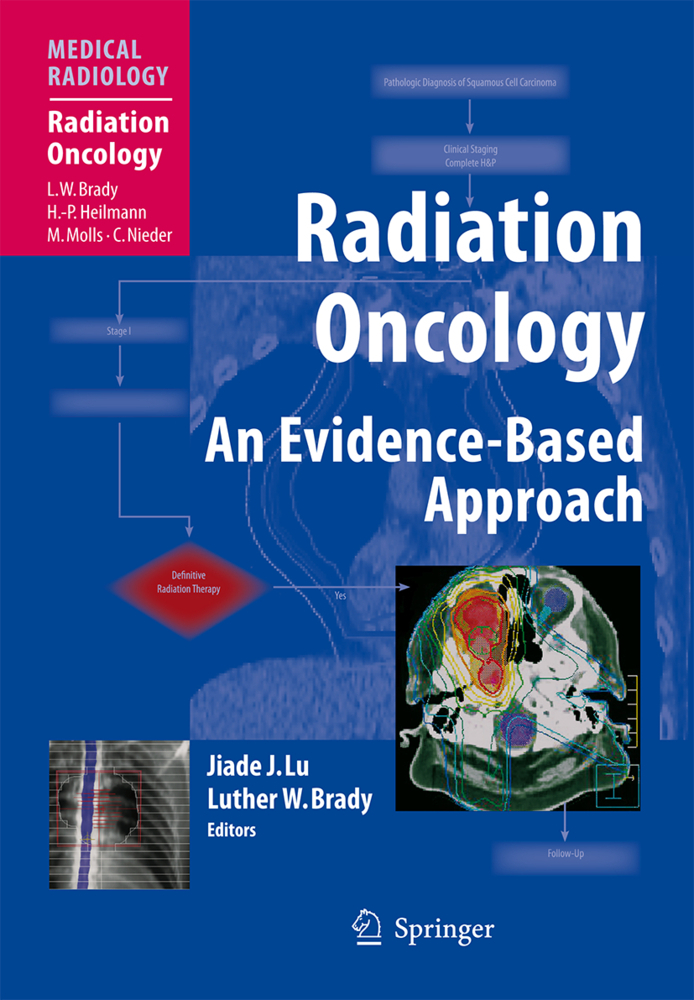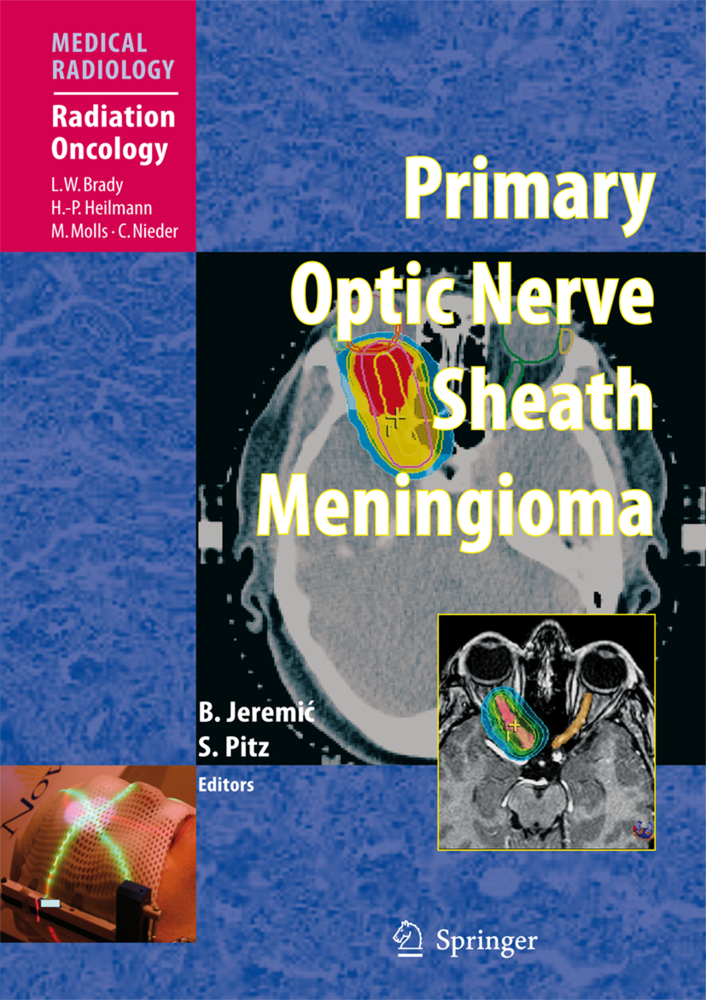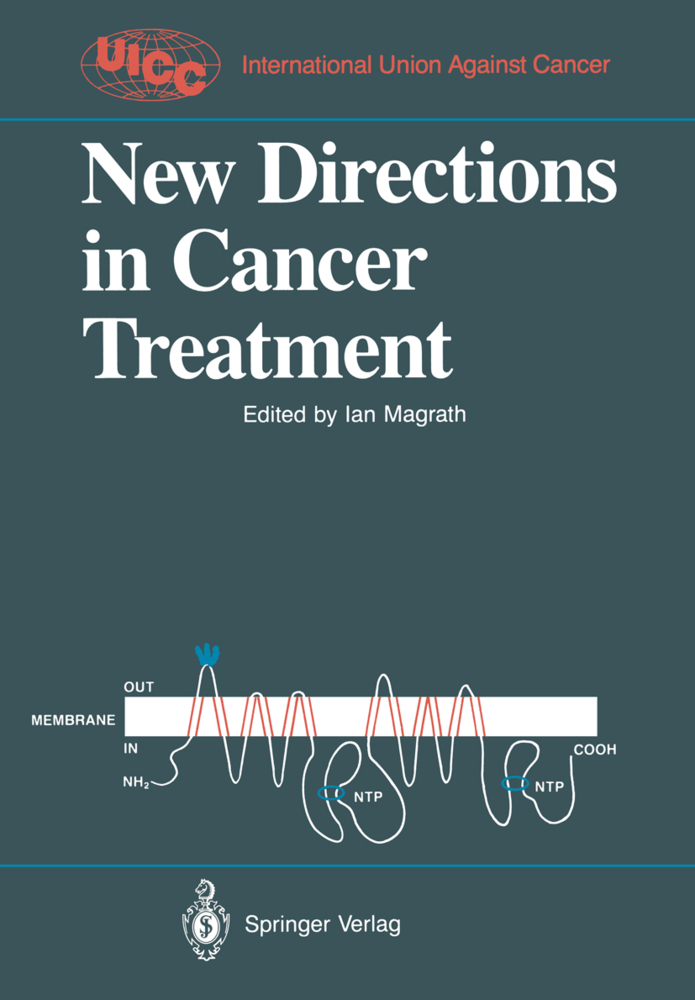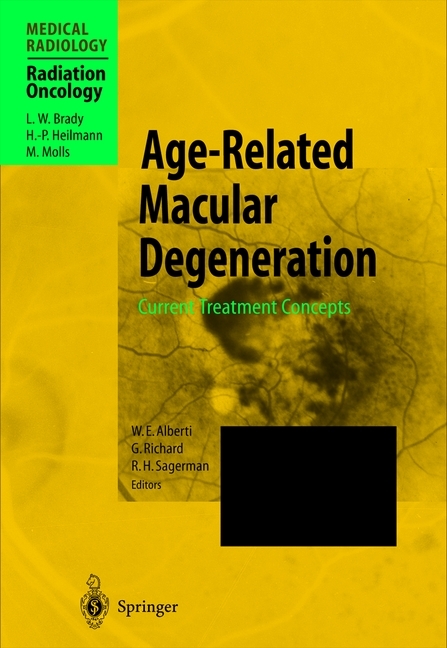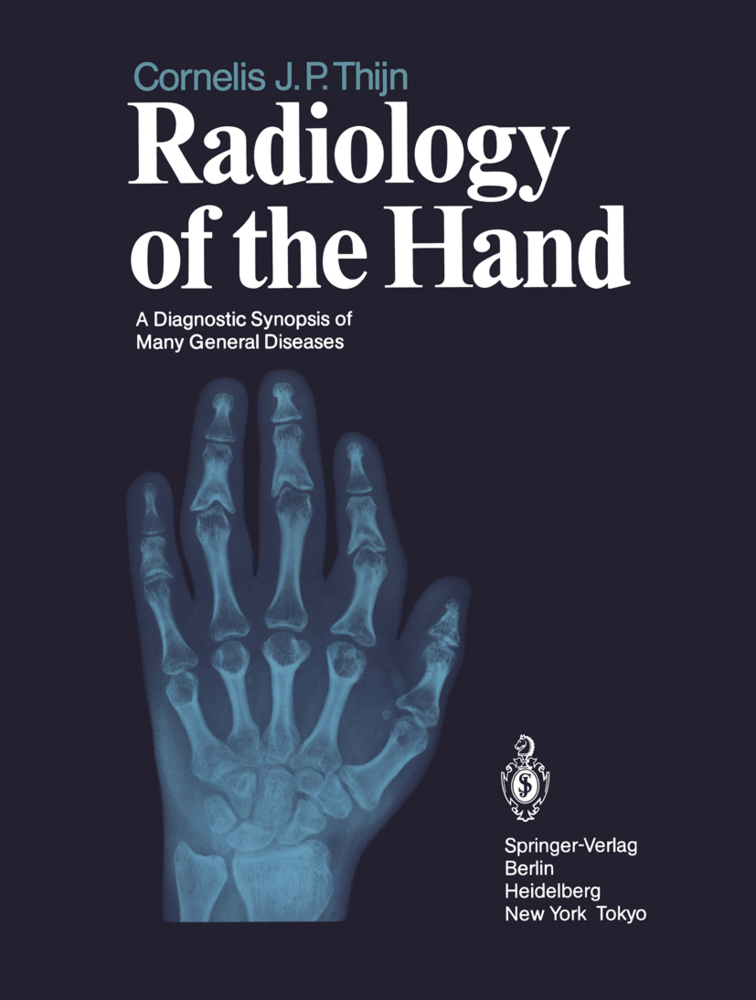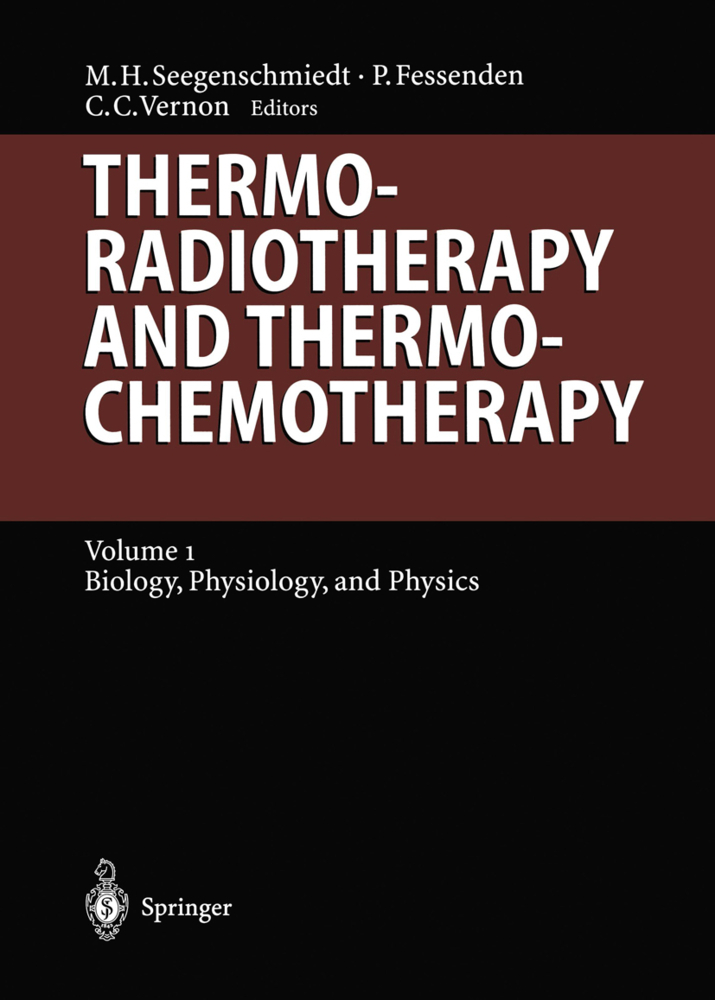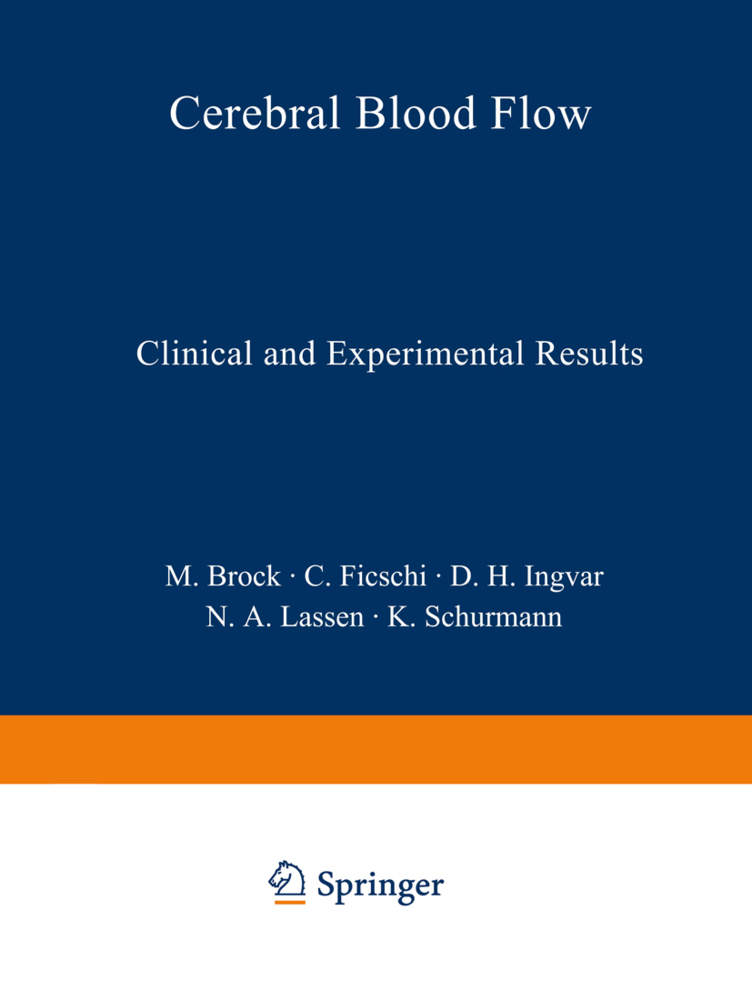Radiotherapy for Non-Malignant Disorders
Contemporary Concepts and Clinical Results
Non-malignant, or "benign", diseases can be successfully treated using ionizing rad- tion technologies. It was first proposed in 1898 by Sokoloff, who reported the analgesic effects of radiotherapy for painful rheumatoid arthritis. Since then, the use of these techniques for painful muscle-skeletal diseases has gained acceptance particularly in Europe but is still carried out actively in the United States. Non-malignant diseases that are amenable to radiotherapy can be classified as inflammatory, degenerative, hype- roliferative, functional, or other disorders. However, the topographic and morphologic considerations are more relevant. Even though radiation therapy for "benign" diseases has not been pursued actively since the 1950s, more recent interest has dictated that it can be a very effective treatment modality. The use of radiotherapy can be justified for invasive and aggressive growth such as that seen with desmoids, for cosmetic d- figurations and functional loss as seen with keloids or endocrine orbitopathy, or for life-threatening complications such as hepatic hemangiomas or juvenile angiofibromas that occur in children or adolescents. Many of the non-malignant diseases can have a major and lasting effect on quality of life by causing pain or other serious symptoms, particularly when other methods of treatment are unavailable, have failed, or may induce more side effects. It is not generally the first choice of therapy in these non-malignant diseases, but it is acceptable as defined. The book edited by Seegenschmiedt et al.
Side Effects and Long-Term Risks from Radiotherapy of Non-malignant Diseases
Risk Assessment and Carcinogenesis Modelling
Radiophysical Principles
Clinical Principles
Irradiation of Non-malignant Diseases: An International Survey
Patterns-of-Care Study for Non-malignant Diseases in Germany
Skin and Soft Tissue Disorders
Non-malignant Skin Disorders: Tumors, Hyperplasia, Dermatoses
Morbus Dupuytren/Morbus Ledderhose
Pronie's Disease
Keloids and Hypertrophie Scars
Aggressive Fibromatosis/Desmoid Tumors
Bone and Joint Disorders
Orthopaedic Examination, Tests and Clinical Scores
Rotator Cuff Syndrome (RCS)
Humeral Epicondylopathia (HEP), Lateral and Medial Humeral Epicondylitis
Calcaneodynia: Plantar and Dorsal Heel Spur/Heel Spur Syndrome
Degenerative Joint Disease Activated Osteoarthrosis Deformans: Hip, Knee, Shoulder and Other Joints
Heterotopic Ossifications: General Survey for All Sites
Heterotopic Ossification Prophylaxis - The Hip
Heterotopic Ossifications after Head and Spinal Cord Injuries (HSCI)
Pigmented Villonodular Synovitis (PVNS)
Langerhans? Cell Histiocytosis (LCH)
Vertebral Hemangioma (VH)
Aneurysmal Bone Cyst (ABC)
Vascular Disorders
Giant Hemangioma/Kasabach-Merritt Syndrome
Eye Disorders
Graves' Orbitopathy
Pseudotumor Orbitae
Pterygium
Hemangiomas and Vascular Tumors of the Eye
Local and Systemic Inflammatory Disorders
Inflammatory Disorders: Furunculitis, Hidradenitis, Panaritium and Paronychia
Lymphocutaneous Fistulas and Lymphoceles
Local Rheumatoid Arthritis and Radiation Synovectomy
Head and Neck
Non-Malignant Disorders of the Head Region
CNS and Brain
Arterio-Venous Malformations
Meningioma
VestibularSchwannoma (Acoustic Neuroma)
Pituitary Adenoma
Trigeminal Neuralgia
Radiosurgical Treatment Options for Epileptic Disorders
Where There is No Evidence: Registry for Rare Benign Diseases.
General Background
Radiobiological PrinciplesSide Effects and Long-Term Risks from Radiotherapy of Non-malignant Diseases
Risk Assessment and Carcinogenesis Modelling
Radiophysical Principles
Clinical Principles
Irradiation of Non-malignant Diseases: An International Survey
Patterns-of-Care Study for Non-malignant Diseases in Germany
Skin and Soft Tissue Disorders
Non-malignant Skin Disorders: Tumors, Hyperplasia, Dermatoses
Morbus Dupuytren/Morbus Ledderhose
Pronie's Disease
Keloids and Hypertrophie Scars
Aggressive Fibromatosis/Desmoid Tumors
Bone and Joint Disorders
Orthopaedic Examination, Tests and Clinical Scores
Rotator Cuff Syndrome (RCS)
Humeral Epicondylopathia (HEP), Lateral and Medial Humeral Epicondylitis
Calcaneodynia: Plantar and Dorsal Heel Spur/Heel Spur Syndrome
Degenerative Joint Disease Activated Osteoarthrosis Deformans: Hip, Knee, Shoulder and Other Joints
Heterotopic Ossifications: General Survey for All Sites
Heterotopic Ossification Prophylaxis - The Hip
Heterotopic Ossifications after Head and Spinal Cord Injuries (HSCI)
Pigmented Villonodular Synovitis (PVNS)
Langerhans? Cell Histiocytosis (LCH)
Vertebral Hemangioma (VH)
Aneurysmal Bone Cyst (ABC)
Vascular Disorders
Giant Hemangioma/Kasabach-Merritt Syndrome
Eye Disorders
Graves' Orbitopathy
Pseudotumor Orbitae
Pterygium
Hemangiomas and Vascular Tumors of the Eye
Local and Systemic Inflammatory Disorders
Inflammatory Disorders: Furunculitis, Hidradenitis, Panaritium and Paronychia
Lymphocutaneous Fistulas and Lymphoceles
Local Rheumatoid Arthritis and Radiation Synovectomy
Head and Neck
Non-Malignant Disorders of the Head Region
CNS and Brain
Arterio-Venous Malformations
Meningioma
VestibularSchwannoma (Acoustic Neuroma)
Pituitary Adenoma
Trigeminal Neuralgia
Radiosurgical Treatment Options for Epileptic Disorders
Where There is No Evidence: Registry for Rare Benign Diseases.
Seegenschmiedt, Michael Heinrich
Makoski, Hans-Bruno
Trott, Klaus-Rüdiger
Brady, Luther W
Brady, L.W:
Heilmann, H.-P.
Molls, M.
Nieder, C.
| ISBN | 978-3-540-62550-6 |
|---|---|
| Artikelnummer | 9783540625506 |
| Medientyp | Buch |
| Copyrightjahr | 2007 |
| Verlag | Springer, Berlin |
| Umfang | XV, 748 Seiten |
| Abbildungen | XV, 748 p. |
| Sprache | Englisch |

